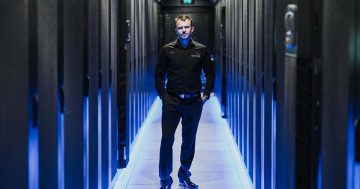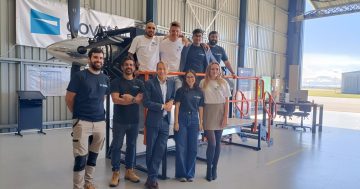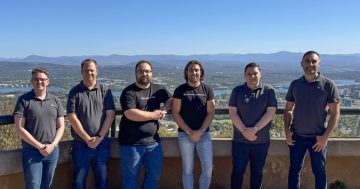
Micron21 managing director James Braunegg’s focus on innovation has made the data centre a pioneer several times over. Photo: Claire Bentley.
When Micron21 founder James Braunegg first floated the idea of building Australia’s first Tier IV data centre, people laughed.
That bar was set at Tier III and considered good enough – but it posed a major issue for James.
“A Tier III data centre is a data centre that can fail with just one fault. What’s the point of that?” he says.
“We needed to be a truly redundant data centre, one that was resilient to failures and would not take customers offline.”
Redundancy in a data centre refers to the addition of components with a sole purpose of backing up other components in the event of failure.
Micron21 began in 2004 as the subsidiary of a larger print business that specialised in creating Australian currency. Due to the technology and confidentiality requirements of the parent business, the facility maintained dark-fibre connections and high levels of physical security.
A healthy measure of paranoia was built into the roots of the company, which meant James not only had to pioneer Australia’s first Tier IV data centre but take things a step further.
“Normally a Tier 4 data centre builds in enough redundancy to survive just one fault, and this standard is still not secure enough for our data centres ” he says.
“Because we’re also managed service providers, we can put hundreds of customers on a single rack. That environment is mission-critical for our customers, many of which are high-end corporate and government clients. Failure would potentially impact hundreds, if not thousands of them. So failure is not an option.
“We take a backup of a backup of a backup. Three or four things would need to simultaneously fail for customers to be taken offline. Tier IV is the highest accredited level a data centre can be. We’re Tier IV because there’s no such thing as Tier V.”
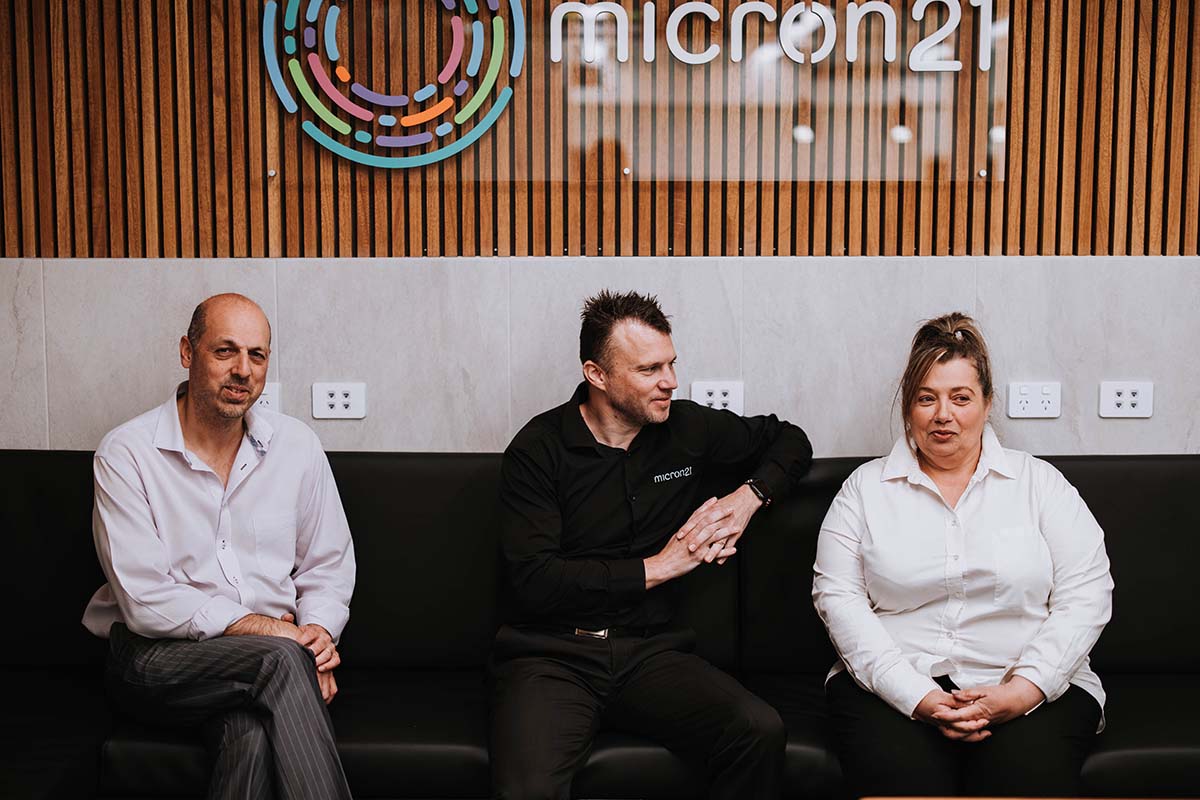
Micron21 head of customer and commercial Sheldon Dyer, managing director James Braunegg and finance and HR manager Michelle Anderson. Photo: Claire Bentley.
It was the first in a string of firsts for the company. Around the time the data centre was built, Micron21 also became the first Australian company to build a commercial 5G network.
This network would supply the local community with high-speed broadband services in a 5 km radius at a time when there was no NBN or any other high-speed, cost-efficient internet option in the area.
Today the company is deploying fibre cable internet to local businesses. While incumbent technology provides 400 to 500 megabits per second – which is already extremely fast – these businesses can now access 100 gigabits for $80 a month.
“Because the footprint of existing clients allowed us to invest in building all of this, there’s no difference to us between supplying one gigabit and five. And it’s not our business to make money off people’s communication,” James says.
“If we could extend our network to local businesses, we would be pioneering a way to provide high-speed services to local businesses. If they could take advantage of our infrastructure, it could be a way to become known in our community and help it grow and thrive.
“Businesses are now moving into the area to save on telco costs. This has driven innovation to the local area.”
The other big first Micron21 claims – and one particularly critical in an age of heightened cyber security threats – is being the first to build a DDoS (Distributed Denial of Service) protected network certified by the Information Security Registered Assessors Program (IRAP).
This means that while typically a data centre provides storage only, with stringent physical security, Micron21’s network is also able to withstand cyber-terrorism attacks.
“The combination of owning both the network and data centre puts us in the optimal position to create a cloud platform that’s controlled end to end,” James says.
“That includes staff available 24 hours a day to intercept problems.”
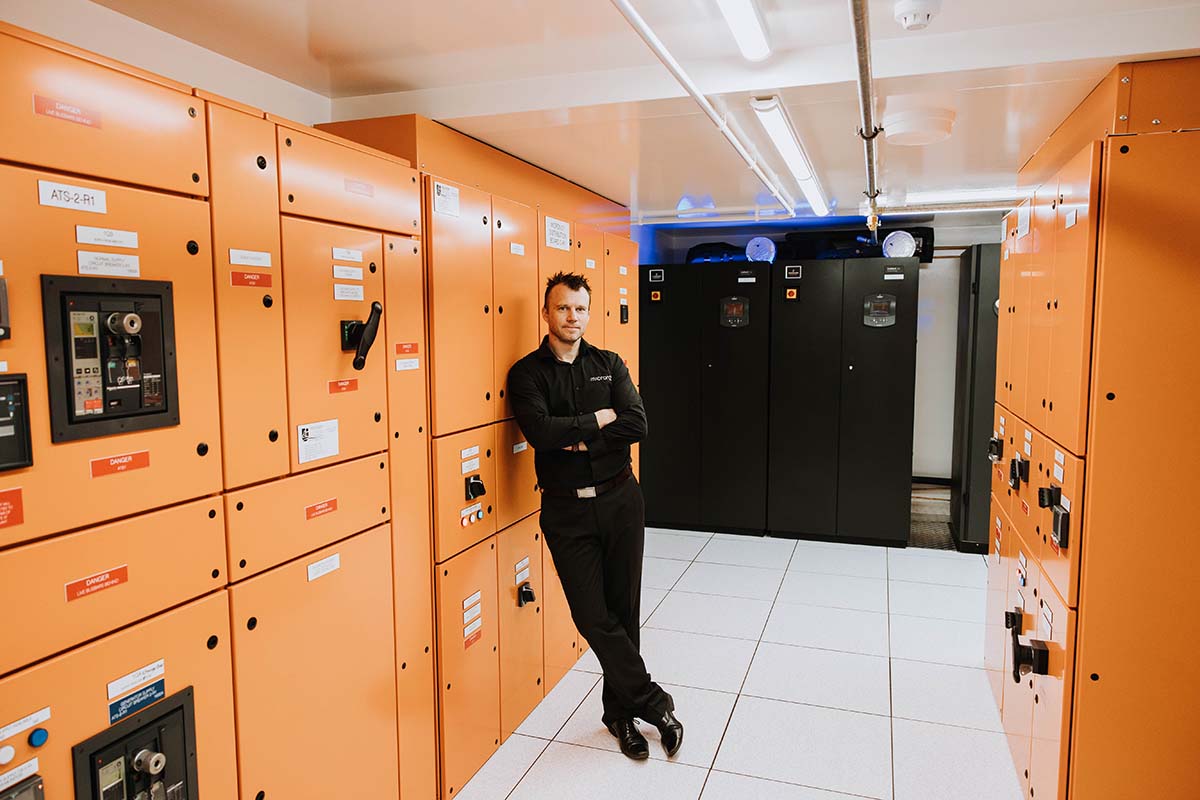
James Braunegg says Micron21’s redundancy goes beyond Tier IV requirements, and that brings customers peace of mind. Photo: Claire Bentley.
Though based in Melbourne, Micron21 has a substantial Canberra client base from the private (including Region Media) and public sectors. Despite this and some major firsts, Micron21 is not a big multi-national company like Equinix, Amazon Web Services (AWS) or Google Cloud. Even domestically, relative to its achievements, it flies under the radar.
The company’s size, combined with its commitment to innovating as well as underpromising and overdelivering, has mandated a slow and steady pace, especially given its insistence on maintaining its sovereign credentials.
“Being 100 per cent Australian owned means nobody can stop us other than the Australian Government,” James says. “That’s super important for us, and I believe this will become increasingly critical for businesses in the future.”
For more information visit Micron21.
Original Article published by Dione David on Riotact.


